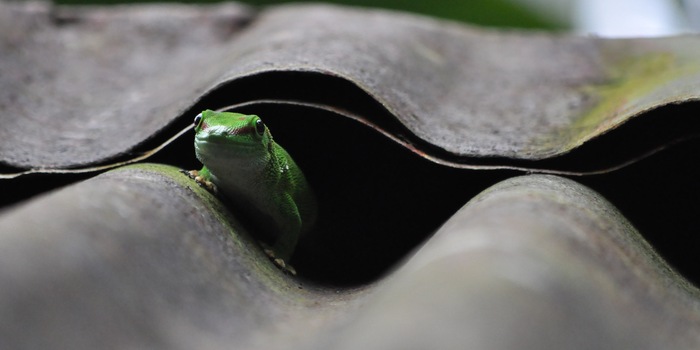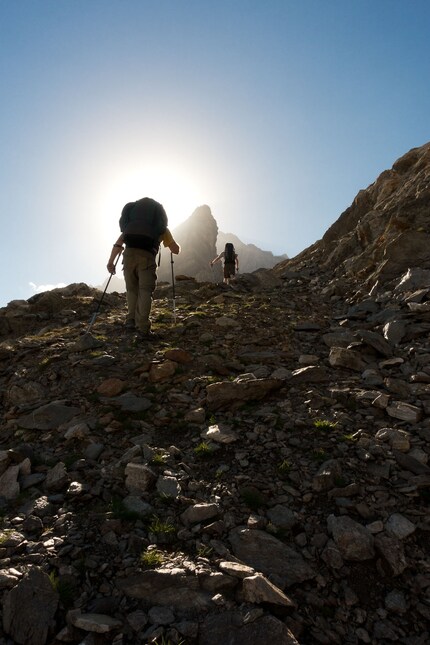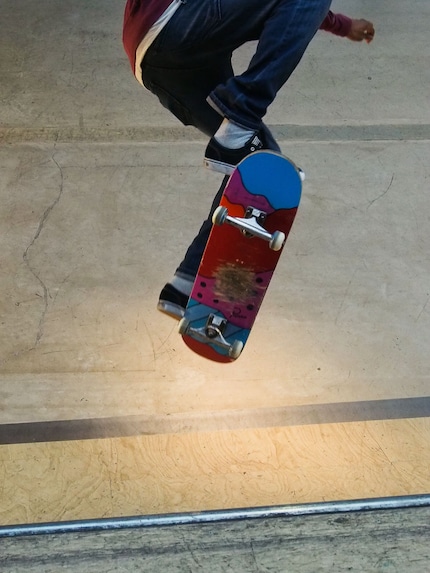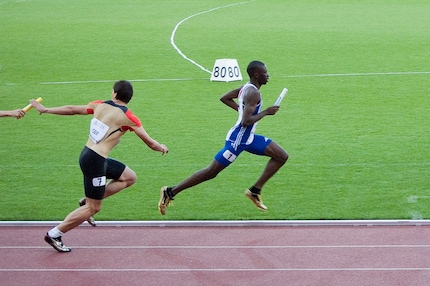
News + Trends
Meditate for 10 days and improve your photography skills
by Denny Phan

Those who take a lot of time when taking photos also take better photos on average. But what do you do if you simply don't have time? Some tips for hectic moments.
Photography takes time. And you often don't have that. The advice that you need to take your time when you don't have it is of course correct. But there are situations in which this is not always possible.
When it comes to sport and action, it's clear that things have to happen quickly at the crucial moment. But this can also be the case when photographing buildings and landscapes. Every year, I go on a week-long hike with a large group. We pass the most remote places with the most impressive mountain landscapes. You can take some impressive photos. But the focus of the group is on hiking, not photography. Some of the stages are tough and people have to stay together. So I can't stop every two minutes and spend five minutes working on the composition. When sightseeing in a larger group, the situation is a little more relaxed, but in principle similar: either you take photos quickly or you are left behind by the group after a short time.

On this hike, I always have to get my camera out of my bag and switch it on first. This wastes time, but there's no other way. I need my hands for the poles and leaving the camera dangling around my neck isn't practical either.
With a holder for the belt, you have the camera to hand more quickly. The same applies to special carrying straps. The camera then hangs so that the lens points downwards instead of forwards, and the strap can be worn diagonally over the shoulder. Standby bags stow the camera so that it is quickly ready for use.
But despite these very useful tools, you need strategies for taking a good photo with little time.
Manual settings take more time anyway. What's more, the next time you use the camera, other settings may be required - and then you forget to reset something in the rush. I have already taken photos in beautiful sunshine and ISO 3200 or, even worse, overexposed a series of images because the aperture was still fully open from the previous series. I therefore recommend shooting with automatic. But not with full automatic, but with programme automatic (mode "P").
In fully automatic mode, the camera selects all the settings itself and often even activates a special programme such as HDR mode automatically. This means you never have to think about any settings, but you also have zero control over what the camera does.
In automatic programme mode, the camera automatically selects the aperture and shutter speed. You can set everything else manually or automatically, depending on your preferences. This allows you to put together an automatic setting that suits you. For example, I always set the flash to manual (i.e. switched off) as I don't like flash and only use it in extreme emergencies. On the other hand, I set the ISO sensitivity to automatic, otherwise I often end up with underexposed or blurred images. On many cameras, you can set an upper limit for the automatic ISO setting to avoid excessive noise.
You can also control the balance between aperture and shutter speed in automatic programme mode by turning the control dial in one direction or the other. This means you don't have to switch to A or S mode if you want to influence the aperture and shutter speed. The easiest way to reset to the default value is usually to exit and reactivate P mode.
Many cameras offer the option of saving customised settings. You can of course use this to set up a "stress preset". However, I prefer to use these user modes for very specific settings, for example black and white photos with high contrast. The general settings that I usually use are then saved in normal P mode. Either way, always take a look at the mode dial before you press the shutter release button.
Back to the example of a hike: I turn a corner and the view of a beautiful valley or a particularly striking rock opens up in front of me. "My spontaneous reaction is to immediately pull out my camera and take the shot. It's wrong. The right thing to do would be to consider whether now is the only opportunity to take a picture or whether the situation will improve further down the path. Can I get any closer? If so, is that better or am I already too close? Will there be a more exciting perspective, from further up for example? Will the angle to the light improve or worsen? What is the sky like? Will the sun come out soon? You have to constantly think about these things when you're out and about on foot with your camera.
If you anticipate that the right moment is coming soon, you can get your camera ready while you're walking. This will also save you a few moments.
Anticipating situations is also the be-all and end-all in sports photography. That's why it's so important that the photographer knows the sport. Ice hockey is the best example: If you can't (pre-)read the game, you won't know where the puck is half the time. It's much easier with some sports. In races, whether on foot, by bike, car or wok, the direction of movement is clear.


After all, the motto "photograph with foresight" applies always and everywhere. Observe people, try to recognise repetitions and anticipate what will happen next, always before you reach for the camera. This works much better anyway if you're not looking through the viewfinder. Whether you're under time pressure or not, switching on the camera and pulling the trigger is only the last step in the process.
There are also situations where neither now nor later is the right moment. This is the case, for example, when something is simply too far away. Or when the light is so bad that I know from experience that it won't work and I don't even need to try. Very often it also happens to me that the photo succeeds, but is just another one of a thousand similar ones. Ultimately, the question is: "Is this picture really necessary?" In the analogue age, when every photo cost money, this thought was taken for granted - and it is still helpful today.
The more experience you have, the better you will know when you don't even need to unpack and switch on your device. This means you waste less time on pointless endeavours. You can limit yourself to the promising situations where you have a little more time for this.
Little time leads to little precision. You can counteract this by building in buffer zones where problems are to be expected.
Exposure: A photo should of course be neither overexposed nor underexposed, but this is not always possible. In this case, underexposure is the lesser evil because it can be easily corrected afterwards. By brightening the image or even just the shadow areas in image processing, the result is usually quite good. Overexposed areas, on the other hand, are simply white and remain so. The image information is gone and cannot be conjured up again through post-processing. Especially in sunlight, I advise you to set the exposure compensation to -0.3 EV or -0.7 EV.
A heavily overexposed image. Everything except the rock is white. [[image:9145350]]
The white parts of the image can no longer be saved by subsequent darkening. [[image:9145342]]
An underexposed image for comparison. You can get a lot out of it in post-processing. [[image:9145353]]
The black areas could be lightened without any problems. [[image:9145370]]
Crop the image: The subject should be as large as possible in the image, but no crucial parts should be cut off (the classic: cut-off feet). For safety reasons, it is better to leave a little too much margin than too little. You can always crop the image later on the computer, and then precisely.
No crooked images: A lot of space is lost when crooked images are subsequently straightened. Sometimes even thick safety margins are of no use here. Therefore: Keep the camera straight, even if it's a bit of a squeeze! Use the grid lines in your camera or, if available, the "spirit level": it shows directly whether you are holding the camera straight.
RAW format: Photos in RAW format save more brightness and colour gradations. When converting to JPEG, these gradations are lost again, but the image can be adjusted more flexibly beforehand. Relatively underexposed images, for example, can be repaired better than if the camera writes JPEGs directly. However, RAW can also be a disadvantage, especially under time pressure. Because the files are much larger, the camera needs more time to write everything to the card.
My interest in IT and writing landed me in tech journalism early on (2000). I want to know how we can use technology without being used. Outside of the office, I’m a keen musician who makes up for lacking talent with excessive enthusiasm.
Interesting facts about products, behind-the-scenes looks at manufacturers and deep-dives on interesting people.
Show all